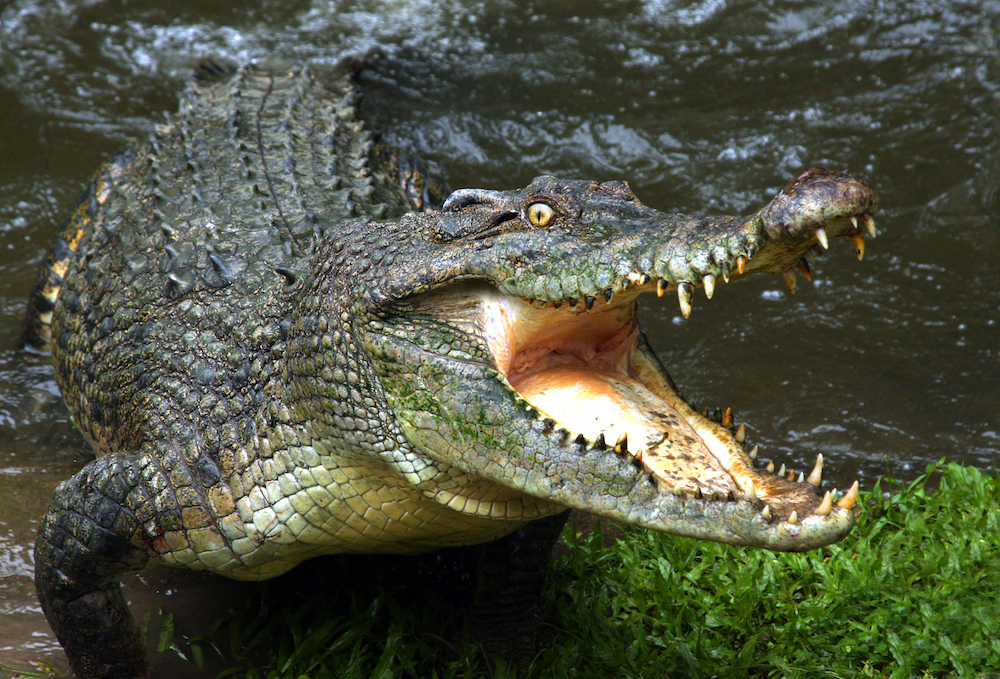Politician's Man-Eating Crocodile Warning Is a Load of Crock

Australian politician Bob Katter wants to launch a war … against crocodiles.
Katter, known for his controversial opinions on multiple topics including same-sex marriage, claimed on Nov. 15 that there are too many crocodiles in Australia. They have no natural enemies, and in the Australian region of North Queensland alone, they eat up to four people each year, he said.
Katter made the anti-croc statement on the Australian Broadcasting Corporation's program "Insiders."[What's the Difference Between Alligators and Crocodiles?]
But crocodile experts assert that the ancient reptiles are, in fact, good for Australia.
The animals have a positive effect on the ecosystem, as well as the local economy, said Adam Britton, a leading crocodile expert and zoologist at Charles Darwin University in Australia. Though Britton conceded that crocodiles in the rivers of northern Australia can threaten people's lives, these dangers can be easily managed, he said.
"There are probably between 150 [thousand] and 180 thousand crocodiles in the Northern Territory [of Australia] and some 40 [thousand] to 50 thousand in Queensland," Britton told Live Science. "They are certainly not endangered. But over the last 30 to 40 years, we were able to deal with the risks [posed by crocodiles] via a management program."
For local people, that program means no swimming in coastal waters or in rivers within a certain distance from the coast.
Get the world’s most fascinating discoveries delivered straight to your inbox.
Britton, who runs the website CrocBITE, which monitors attacks by all sorts of crocodile species around the world, noted that North Queensland has experienced an unusual streak of crocodile attacks over the past year. However, he said that he doesn't think there are too many crocodiles in Queensland's rivers. Rather, the croc population is still recovering from overhunting that occurred in the first half of the 20th century, he said.
"This year has been a little bit unusual for Queensland," Britton said. "They had four attacks in total. Two of them were fatal. It has been the worst year they've had for a long time."
But in the long term, the statistics look less sinister, Britton said. "Over the last 10 years, there have been 14 crocodile attacks in North Queensland, six of them fatal," he said. "That would be about one person killed by crocodiles every 20 months."
Most of the victims had ignored a slew of warning signs, Britton said. The crocodile habitats are known and marked by warning signs, yet some people decide to risk their lives nonetheless.
In one of the recent cases, for example, a guy "was attacked by a crocodile when he was showing off to a girl," Britton said. "He jumped into the water, where he knew there were crocodiles, and sure enough, one of them bit him. It's like putting on a blindfold and walking into a highway. You may be lucky or you may not."
Britton added that even though crocodiles place limitations on people living in the areas, northern Australia benefits from the animals' presence. The reptiles attract adventure-seeking tourists, and the wild-crocodile egg-harvesting program is an important source of income for Aboriginal people in the Northern Territory, he said. Harvesters can sell the eggs to crocodile farms that breed the animals for skins, which are popular in the fashion industry.
Moreover, artificially reducing the crocodile population could disrupt the balance of the wider ecosystem, Britton said.
"There are examples from other parts of the world," Britton said. "For example, in Brazil, when they removed black caimans [a large crocodile species], the economically valuable fish that were captured by local people disappeared."
After the reintroduction of the caimans, the fish population recovered. Researchers eventually found that the juvenile caimans feed on crabs, which eat fish eggs. The lack of juvenile caimans had meant too many crabs in the water, which resulted in a reduced fish population and economic problems for local fishers.
Katter said he is concerned that crocodiles don't have natural enemies and that the only way to keep the population within limits is to kill off the animals. But Britton said the population will stabilize naturally once it reaches healthy levels.
"As the crocodile population recovers, the mortality rate of juveniles increases through competition," said Britton. "Crocodiles actually self-control their own population growth, eventually slowing down and reaching a stable level like any wild animal population with limited resources."
Originally published on Live Science.



